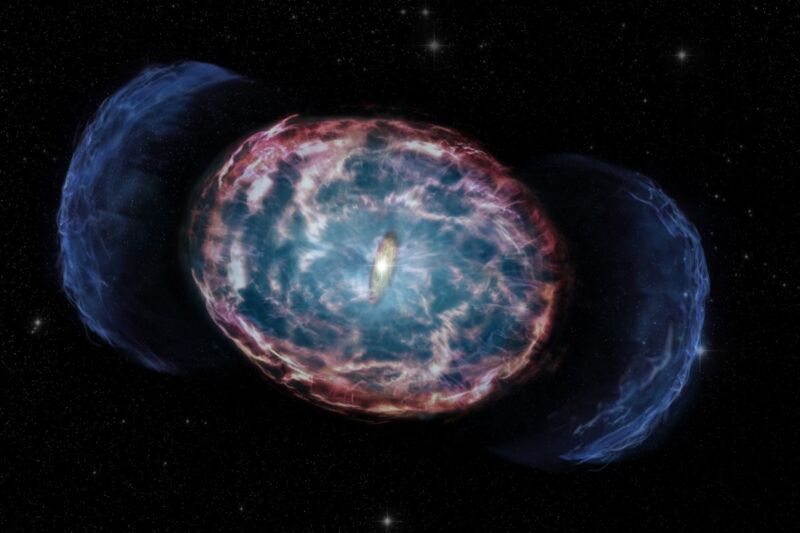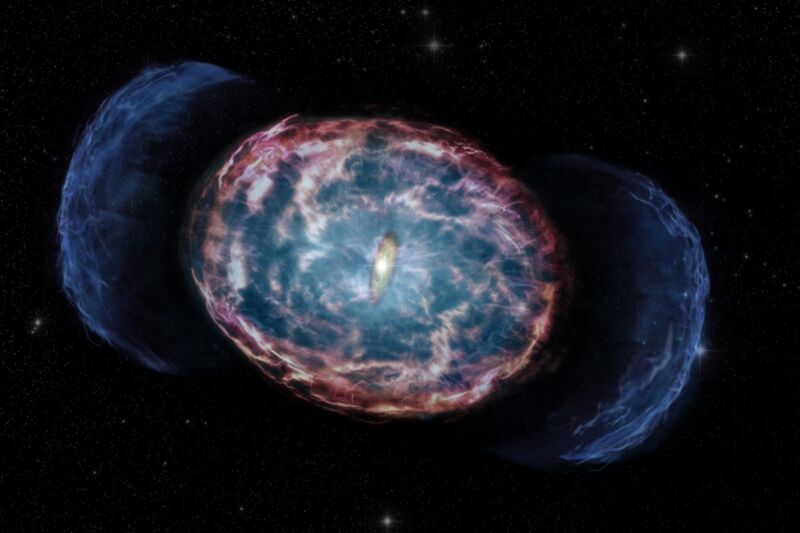
Enlarge / Artist’s representation of the merger of two neutron stars to form a black hole (hidden within bright bulge at center of image). The merger generates opposing, high-energy jets of material (blue) that heat up material around the stars, making it emit X-rays (reddish clouds). (credit: NASA/CXC/M. Weiss)
Back in 2017, astronomers detected a phenomenon known as a “kilonova“: the merger of two neutron stars accompanied by powerful gamma-ray bursts. Three and a half years later, astrophysicists spotted mysterious X-rays they believe could be the very first detection of a kilonova “afterglow,” according to a new paper published in The Astrophysical Journal Letters. Alternatively, what the astrophysicists saw could be the first observation of matter falling into the black hole that formed after the merger.
As we’ve reported previously, LIGO detects gravitational waves via laser interferometry. This method uses high-powered lasers to measure tiny changes in the distance between two objects positioned kilometers apart. (LIGO has detectors in Hanford, Washington, and in Livingston, Louisiana. A third detector in Italy, known as Advanced VIRGO, came online in 2016.) Having three detectors means scientists can triangulate and better pinpoint where in the night sky any telltale chirps are coming from.
In addition to seven more binary black hole mergers, LIGO’s second run, from November 30, 2016, to August 25, 2017, detected a binary neutron-star merger with a simultaneous gamma-ray burst and signals in the rest of the electromagnetic spectrum. The event is now known as GW170817. These signals included the telltale signatures of heavy elements—notably gold, platinum and uranium—created by the collision. Most lighter elements are forged in the death-throe explosions of massive stars known as supernovas, but astronomers have long theorized that the heavier elements might originate in kilonovas produced when two neutron stars collide.





